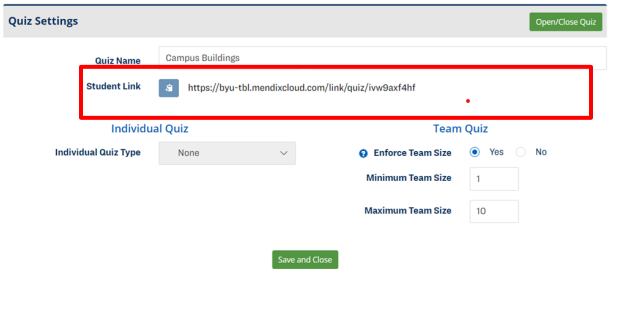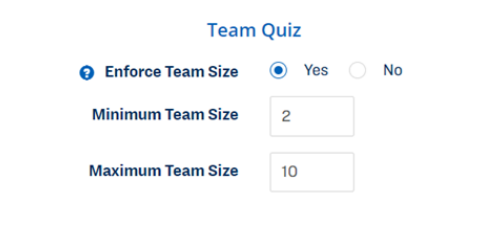Creating a Quiz
(current as of version 1.0.0.X)
Overview
These instructions on how to create a quiz in Team Based Learning have been divided into four sections, an overview of each section is described in the bulleted list below.
● Creating a Quiz
This section contains instructions for how to create a new quiz and the different types of quizzes are explained.
● Adding Questions to your Quiz
This section contains instructions for how to add questions to your quiz. Multiple question types are supported. The point wagering functionality is explained.
● Adding Images to your Quiz
This section contains instructions for inserting images to your quiz. Images can be added to the question or to the answers or both.
● Finalizing and Opening your Quiz
This section contains instructions for how to post the quiz for students.
Creating a Quiz
1. Click the "New Quiz" button

2. The Quiz Settings will pop up. This allows you to customize different settings for the quiz you are creating. Add a title for your quiz in the "Quiz Name" box.

3. A link for the quiz will be created. This link can be used by students to access the quiz.

4. After all of the quiz questions have been added and filled out, you can select a quiz type under the "Individual Quiz" header.
The following quiz types are available:
A) "None" means that individuals will not be able to take a quiz. Only teams of students will be able to take the quiz.
B) "Standard Quiz" refers to an individual quiz where each question has a point value associated with it. The student will only be able to select a single answer for each question. These individual scores can be shown on team quizzes using the "Show Individual Answers on Team Quiz." All questions will be evenly weighted by selecting the "Yes" option for the "Single Point Questions" setting.
C) "Point Spreading" option allows for students to split the number of points a question is worth between multiple answers. For example, if a question is worth six points, a student will be able to split those six points between multiple answers if unsure of the correct answer. The student would be able to place three points on A, two points on B, and one point on D. The student will receive however many points they placed on the correct answer. If the correct answer to the above example is B, the student will receive two out of the possible six points for that question. If a student is confident in their answer, they can place all the points on the correct answer to receive full points for that question.

5. Choose a minimum and maximum team size under the "Team Quiz" header. Also choose whether these team size limitations will be enforced.
